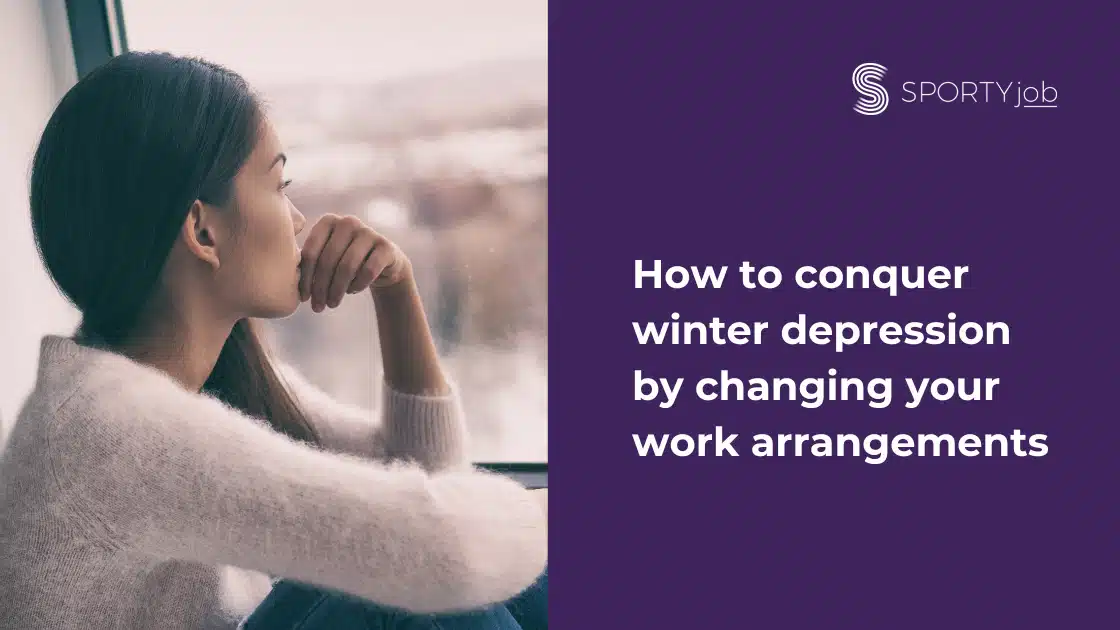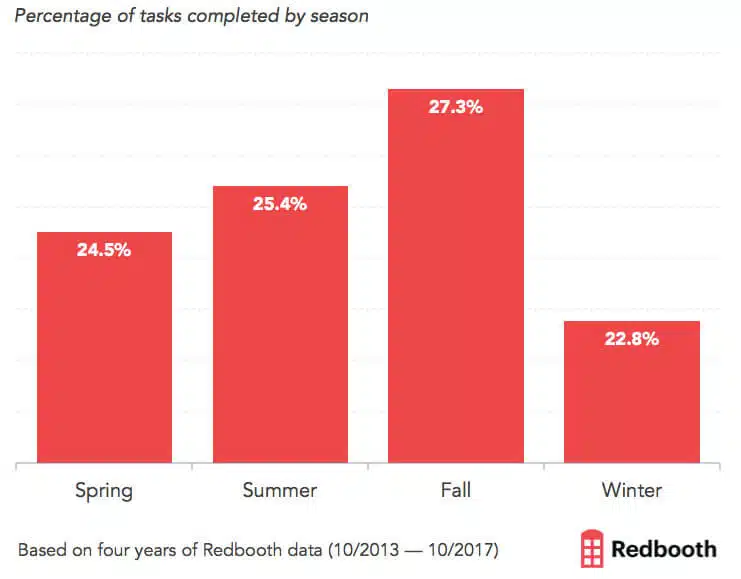
How to conquer winter depression by changing your work arrangements
We europeans are no strangers to seasonal affective disorder (short: SAD). If you’ve been living through dark winters, you’ve probably been subject to winter depression and its symptoms fatigue, mood swings and medium- to long-lasting melancholia. While it is already tiring to get through winter in itself, it might get harder when you’re sitting in an office during daylight hours.
Supporting this claim, a Study also shows that we are least productive in the winter months. The reasons for this, apart from health reasons (e.g. colds, flu) and stress from commuting in risky weather conditions such as snow, ice and limited visibility, are mainly the lack of sunlight.

Source: Redbooth – Everybody’s Working for the Weekend, But When Do You Actually Get Work Done?
Like most organisms on this planet, we depend on light, preferably sunlight. It influences our so-called circadian clock, our internal clock, which is not only crucial for healthy sleep and thus more energy, but also for our mood. Scientists argue that SAD is caused by the fact that our internal clock is no longer in sync with natural daylight and our sleep-wake rhythm gets confused.
The other reason is that sunlight helps us to produce certain hormones and vitamins that are important for feeling energetic and happy, such as serotonin and vitamin D.
So at best, as workers, we should try to get out every day – even if only briefly – during the day. This assertion is supported by a Study by Sleep Health. It shows that workers who are exposed to sunlight, especially in the morning, sleep better and suffer less from SAD than workers who do not.
Better everyday working life in winter through flexible working models
Even if we cannot influence the length of the days, we can make some changes to the way we organise our work. Reducing working hours in winter to ensure a work-life balance even in daylight hours would certainly be an option. For most of us, however, this is not practical due to lower earnings or could clash with personal career goals.
So what is the alternative?
Flexible working models against winter depression
One possible way to solve this problem would be flexible working models. In recent years, more and more employers have moved from the fixed 9-to-5 office model to alternative working hours and locations where employees can decide for themselves when, how long and where they work.
These methods have also proven to be beneficial for employers as they improve overall performance through better motivation and satisfaction of employees.
Two models have prevailed:
Flexitime
The standard concept of flexitime is to give workers the freedom to fulfil their contractual weekly working hours according to their own schedule. This is usually combined with setting core working hours, e.g. between 10:00 and 14:00, and giving workers the freedom to determine the start and end of the day themselves.
Especially in terms of seasonal affective disorder, this model allows for a relaxed start to the day before work or a finish to the day before sunset, giving you the opportunity to be outdoors during the day.
Working from home
The other working model that has already proven itself during the 2020 lockdown is working from home. It reduces commuting time, shortens working days and has the advantage of reducing stress because you are literally in a homely, comfortable place.
However, working from home can also have a negative impact on mental health, especially as a healthy work-life balance is not guaranteed. So, in order to achieve a positive outcome from working from home, it is essential that you
- communicate regularly with other colleagues
- maintain a healthy work rhythm / work no or limited overtime
- ensure a good work-life balance by taking regular breaks, leaving your desk and using time off for personal activities.
- stay in touch with other people outside work as well
Conclusion
Overall, flexible working in winter is about taking care of your wellbeing to avoid or at least reduce SAD symptoms. The goal is to find time to go outside in daylight, relieve stress through breaks and have time for hobbies. The best options to make this possible are working from home and flexitime. It is best to check with your employer what options there are for you to make this work best for you.
Other articles you might like:

Share
Facebook
X
LinkedIn
Telegram
Tumblr
Whatsapp
VK
Bluesky
Threads
Mail